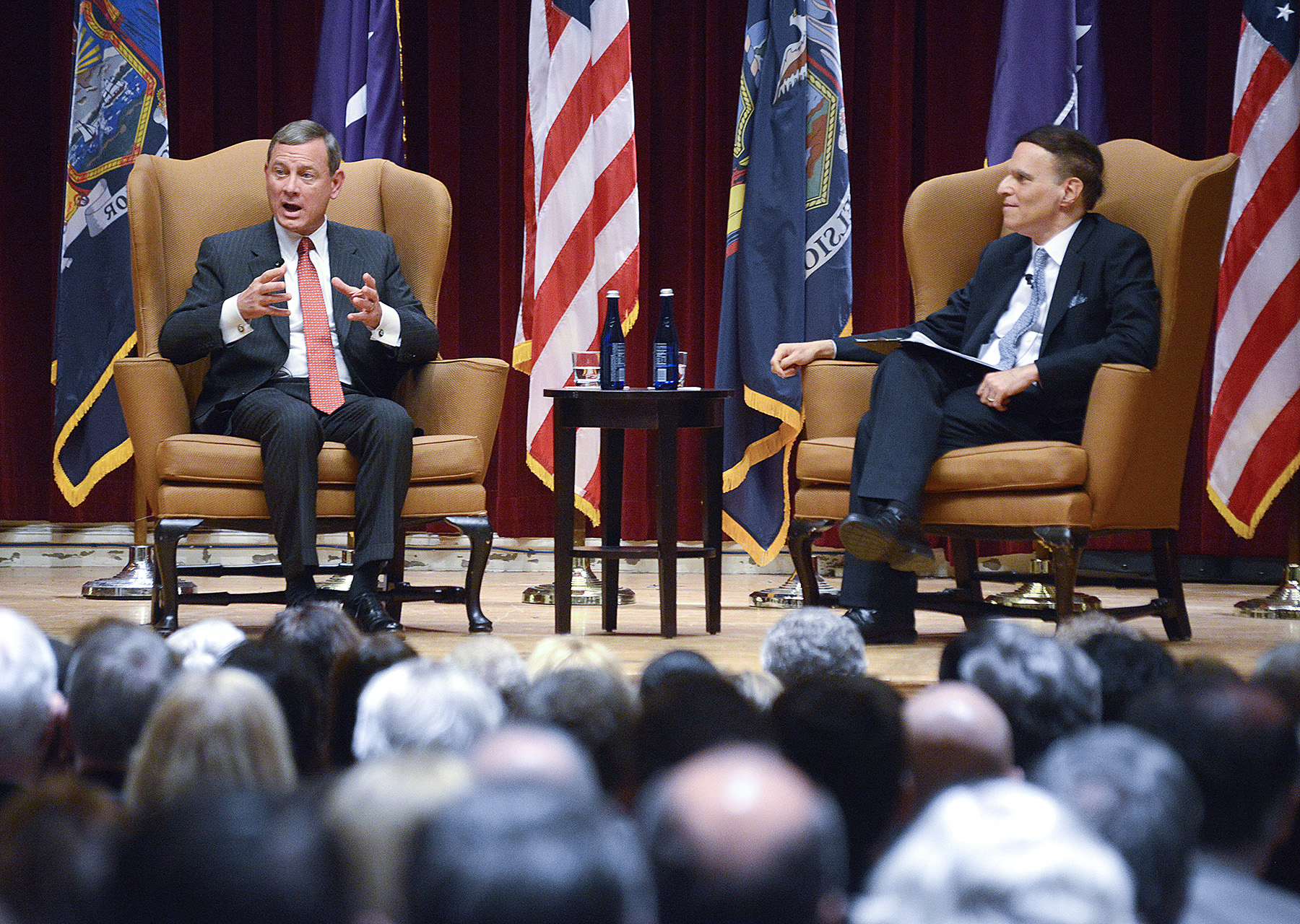Chief Justice John Roberts will not grow a beard. But what else do we know about him? On Friday, November 20th the Society was proud to partner with the Supreme Court Historical Society to host the 4th program in our series “Nominated from New York: The Empire State’s Contributions to the Supreme Court Bench.” This time we examined the legacy of Charles Evans Hughes through a lecture and conversation with his successor, current Chief Justice of the United States John G. Roberts, Jr.
Justice Roberts discussed Hughes’s legacy and tenure as Chief Justice, reflecting on the image he projected as a leader of the third branch of government. As the Wall Street Journal noted, Roberts reflected more on Hughes’s leadership role than his jurisprudence, discussing his path to the Chief Judgeship and his approach to, among other things, FDR’s court packing plan. Among other things, as the WSJ, points out, Hughes also oversaw the court’s move from the basement of the US Capitol building to its current courthouse, a move that Justice Roberts described as fitting for the court’s stature.
In his subsequent conversation with Chief Judge Robert A. Katzmann, Chief Judge of the US 2nd Circuit Court of Appeals, Roberts touched on a wide range of issues, including his respect for Hughes’s approach to “promoting collegiality” on the court (CNN). He also discussed the other responsibility of managing the court, frequently touching on the importance of representing the court to outside groups and maintaining its image. “Somebody does have to represent” the court Roberts responded at one point, returning to a frequent theme of power in the image that the court projects.
Justice Roberts stuck to historical topics during the evening, avoiding, as the Washington Post noted, some of the more controversial political opinions that his colleagues have spoken about in recent years. However, his thoughts on Hughes’s leadership give insight into how he approaches his role as Chief Justice as well as his role as one of nine sitting judges.
Roberts tempered the formality of the subject with a dry sense of humor, making quips about his predecessor, his facial hair and much more. His beard line was perhaps his best received of the night, but Roberts proved, if nothing else, that legal history does not have to be dry.
Photo Courtesy Rick Kopstein, New York Law Journal

